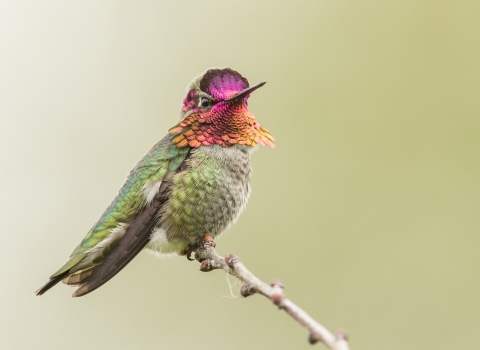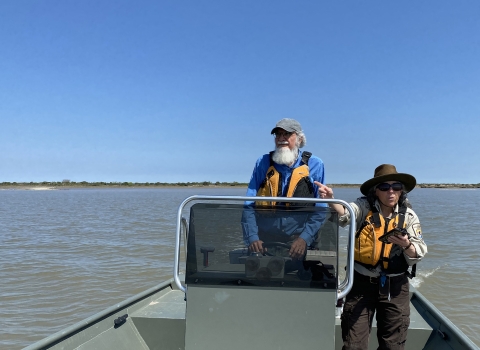Changes would improve management of invasive species invasive species
An invasive species is any plant or animal that has spread or been introduced into a new area where they are, or could, cause harm to the environment, economy, or human, animal, or plant health. Their unwelcome presence can destroy ecosystems and cost millions of dollars.
Learn more about invasive species , protect additional 11 acres,increase management funds; 60-day public comment period opens
The U.S. Fish and Wildlife Service (Service) today published a proposal to strengthen the San Bruno Mountain Habitat Conservation Plan (HCP), the nation's 25-year-old pioneer effort to provide regional protection for imperiled species and their habitat.
The changes proposed for the 1983 HCP would enable habitat managers to better control invasive plants that have been crowding out native plants and butterflies on some of the mountain. The changes also would increase funding for its management. The bulk of the funds would come from a $4,000,000 endowment to be established by developers who have existing rights to reduce some habitat on the far northeast corner of the mountain. The developers have agreed to give up development rights on a net 11 acres that would be preserved.
The Service's proposal today opens a 60-day public comment period, through June 16, 2008. It would amend the HCP, giving its stewards legal protection if they accidentally kill a callippe Silverspot or other covered species.
The existing HCP covers almost the entire mountain, about 3,500 acres. More than three-fourths of the mountain (2,828 acres) has been protected since 1983 by the HCP. But invasive species have been edging onto parts of the mountain, reducing natives species. Two endangered butterflies protected by the 1983 document, mission blue and San Bruno elfin, have been losing habitat due to invasive plants. A third butterfly, the callippe silverspot, was only listed under the Endangered Species Act (ESA) in 1997 and therefore has not been covered by the HCP. The proposed amendment would include the callippe silverspot in the HCP, providing regulatory authority to also manage the mountain for its protection. The new amendment would add 11 acres to the protected habitat, by consolidating two areas previously authorized for development on the northeast edge into one.
When completed in 1983, the San Bruno Mountain HCP was a radical new approach for protecting endangered species. Instead of reserving smaller plots of habitat project-by-project, the San Bruno HCP addressed an entire landscape. It earmarked large areas for conservation with development confined to a few small areas on the periphery.
Today the HCP approach is well-established as the preferred method for conserving species in areas of growth. HCPs are developed by local interests, with cooperation of the Service, which then issues the permits necessary to implement them.
In California alone hundreds of thousands of acres now are protected under HCPs. Last year Contra Costa County completed an HCP that will protect 30,000 acres, while allowing development on up to 13,000 acres. Santa Clara County is working on an even larger HCP that could cover about 500,000 acres.
The original San Bruno Mountain HCP made local interests"San Mateo County and the cities of Brisbane, Daly City and South San Francisco?responsible for protecting habitat, while giving them more flexibility to make decisions and protect habitat.
The full notice can be found in the Federal Register at http://edocket.access.gpo.gov/2008/pdf/E8-8051.pdf . More information can be found at http://www.fws.gov/sacramento. Comments may be submitted to: Eric Tattersall, Acting Chief, Conservation Planning and Recovery Division, U.S. Fish and Wildlife Service, Sacramento Fish and Wildlife Office, 2800 Cottage Way, W-2605, Sacramento, CA 95825.
The mission of the U.S. Fish and Wildlife Service is working with others to conserve, protect and enhance fish, wildlife, plants and their habitats for the continuing benefit of the American people. We are both a leader and trusted partner in fish and wildlife conservation, known for our scientific excellence, stewardship of lands and natural resources, dedicated professionals and commitment to public service. For more information on our work and the people who make it happen, visit www.fws.gov.


